Alina Polyakova, director of the Project on Global Democracy and Emerging Technology at Brookings, testified at a hearing of the Senate Committee on Foreign Relations’ Subcommittee On Europe And Regional Security Cooperation, on “Five Years After the Revolution of Dignity: Ukraine’s Progress/Russia’s Malign Activities.” The hearing was postponed from March 2019, and an adapted version of her original statement was published here.
Dear Chairman Johnson, Ranking Member Shaheen, Distinguished Members of the Subcommittee:
It is an honor and privilege to address you on Ukraine’s progress and Russian malign activities five years after Ukraine’s Revolution of Dignity and Russia’s illegal annexation of Crimea and invasion of the Donbas. Thank you for inviting me to speak.
Ukraine remains a key arena of contestation between Russia and the West. In the new and uncertain environment of geostrategic competition, ensuring and committing to Ukraine’s success as a democratic society in which Ukrainians are free to determine their path should continue to be a top priority for the United States and our allies. Ukraine is a large European country with a population of 45 million people. It is rich in natural resources and human capital, and its success or failure can tip the balance in the accelerating competition between Russia and the West. An unstable Ukraine means a Europe that is less secure and less able to defend itself from future threats. For these reasons, the United States must continue to support Ukraine’s democratic path, its Euro-Atlantic future, and its ability to defend itself militarily against continued Russian aggression. Deterrence of an increasingly aggressive Russia must start in Ukraine.
The Kremlin seeks to prevent Ukraine from moving toward the West by keeping it in a permanent “grey zone.” To achieve that goal, Russia continues to destabilize Ukraine through conventional and nonconventional military means while seeking to undermine Ukraine’s democratic and economic reform process.
Russia continues to occupy and militarize Ukraine’s Crimean Peninsula. Russia’s Black Sea Fleet, headquartered in Sevastopol, is serving as the operational naval base for consolidating and increasing Russian dominance over the Black Sea. Over the last two years, Russia has engaged in a significant military buildup in Crimea. Beginning in January 2017, Russia began deploying S-400 surface-to-air missile systems in Crimea.1 Since then, at least five S-400 armed battalions have been positioned in Crimea, including in Kerch, Sevastopol, Feodosia, Dzhankoy, and Yevpatoriya.2 The S-400 system has a range of approximately 250 miles (400 kilometers). Combined with additional capabilities currently present in Crimea and surrounding waters, including anti-ship cruise missiles, coastal defense cruise missile systems, radar systems, and combat aircraft, Russia now has military dominance in the critical Black Sea region. In November 2018, Moscow used these capabilities to open a new front against Ukraine in the Kerch Strait. In that attack, the Russian coast guard fired on and seized three Ukrainian naval vessels and detained 24 Ukrainian crew members as they transited the Kerch Strait. The Ukrainian servicemen remain in Russian custody. This event followed a months-long Russian effort to control the Sea of Azov through regular harassment and detention of Ukrainian commercial ships and foreign vessels seeking passage to Ukrainian ports. Russia stepped up these aggressive efforts since opening the bridge over the Kerch Strait connecting Crimea to the Russian mainland by land in May 2018.
Today, with its naval military dominance and completion of the Kerch Strait bridge, Russia has a stranglehold on the Sea of Azov. Vessels seeking passage to Ukraine’s two key Sea of Azov ports, Mariupol and Berdyansk, must pass through the Kerch Strait and navigate increasingly hostile waters, facing detentions, long shipment delays, and harassment. As a result, since 2014, Ukraine has incurred an estimated $400 million in losses due to the obstruction of ports and Russian aggression in the Black Sea region.3 Russia is de facto engaged in an economic blockade of Ukraine via the sea.
In Ukraine’s east, continued Russian military operations in the Donbas have cost over 13,000 Ukrainian lives and displaced over 1.5 million Ukrainians since 2014.4 The situation in Ukraine’s Donbas is far from a frozen conflict – it is low intensity open warfare. On average, ten to twelve Ukrainians were killed or injured every month in the Donbas since the beginning of this year.5 Since the beginning of the conflict in 2014, more than 4,000 Ukrainian servicemen have lost their lives.6 According to the UN Office of the High Commissioner for Human Rights (OHCHR), there were 40,000-43,000 “conflict related casualties in Ukraine” between April 2014 and January 2019. The Minsk process, which was designed to bring a peaceful solution to the conflict, has stalled. While the dialogue remains an important platform for the Trilateral Contact Group, Moscow has little interest or incentive in changing the current status quo.
In addition to military aggression, Russia has also used Ukraine as a test-lab for its arsenal of political warfare. This includes information warfare, cyber-attacks, the use of energy supplies to exert political pressure, and the export of corruption to gain a foothold in politics.
While Russian interference in Western elections came as a surprise to many, Russia has a long track record of intervening in Ukraine’s elections since 2004. Ukraine’s experience is thus a bellwether for assessing the Russian tactics that may be deployed against the West.7 Ahead of Ukraine’s presidential elections this spring, the Russian media spread disinformation narratives claiming that Ukraine’s presidential candidates were U.S. puppets, that the election systems are controlled by Ukraine’s intelligence agencies, and that Western governments are interfering in Ukraine’s electoral process.8 Disinformation against then-candidate Volodymyr Zelenskiy claimed that he was linked to the Notre Dame fire in Paris9 and that he was a drug addict.10 And in a new and worrying tactic, a Russian operator confessed to being tasked with identifying Ukrainians who would be willing to “rent out” their Facebook accounts for the spread of disinformation.11 Of course, Russian political warfare does not stop when the ballot box closes. Russian disinformation on social media platforms targeted Ukraine well before Moscow launched its information warfare against elections in the U.S. and Europe, and Ukraine remains its top target.12 Russian state media, social media trolls, and bots spread and amplify false stories about Ukraine to undermine the legitimacy of the government and to divide Ukrainian society. Some recent stories claim that Ukrainian children are forced to play with stuffed Adolf Hitler dolls13 and that Ukraine’s national church “is becoming the Christian version of ISIS.”14
There have been at least 15 known Russian-attributed cyber-attacks on Ukraine since 2014.15 A December 2015 cyber-attack caused a blackout affecting over 230,000 Ukrainians.16 The malware used in that attack, BlackEnergy, has been detected in electric utilities in the United States.17 In June 2017, the “NotPetya” virus, which the United States attributed to the Russian military,18 originated in Ukraine and spread to 64 countries, including the United States, and affected major international companies, logistical operators, government agencies, telecommunication providers, and financial institutions.
Russia has continued to aggressively use natural gas as a tool of political warfare against Ukraine. Gazprom, Russia’s state owned natural gas monopoly, shut off gas exports to Ukraine in 2006 and 2009. In 2009, the gas dispute affected gas supplies to Europe and left Ukrainians without gas for almost three weeks in the middle of winter before reaching a negotiated resolution. The current gas transit contract between Ukraine and Russia expires at the end of 2019. Europe imports approximately a third of its gas from Russia,19 41 percent of which is delivered via transit pipelines in Ukraine.20 Negotiations between Gazprom and Ukraine’s Naftogaz to renew the transit contract have stalled as Gazprom seems unlikely to sign a new contract, raising concerns of a potential gas crisis in January 2020 that could also affect supplies to Europe.21
The Nord Stream 2 pipeline project is part of Russia’s energy warfare against Ukraine. Nord Stream 2, when completed, would allow Russia to circumvent Ukraine as a transit route for Europe-bound natural gas, enabling Russia to shut off gas to Ukraine without affecting the lucrative European market. It would also deprive Ukraine of approximately $3 billion22 in gas transit fees. In addition to the economic effects, Nord Stream 2 has a military and security objective. Currently, the line of contact in the Donbas tracks with the gas transit pipelines in Ukraine. It makes sense, from Moscow’s perspective, to avoid any damage to gas pipelines delivering gas to Europe via Ukraine. This means that Ukraine’s gas pipelines are de facto acting as a deterrent on further Russian military aggression. When Russian gas is no longer flowing via Ukraine, that deterrent will also disappear.
Despite Russia’s determination to see Ukraine fail economically, politically, and militarily, Kyiv has made significant strides the last five years. It reformed its energy sector, set up an anti-corruption infrastructure, and stabilized its economy. The economy contracted 17 percent between 2014 and 2015 but returned to growth in 201623 and is forecast by the IMF to grow by 2.7 percent this year.24 The government pushed through painful reforms by raising gas prices to market levels as required by the IMF, thus removing a core opportunity for graft. The government also launched a transparent online bidding system for public procurement. Taken together, these economic reforms returned up to $6 billion in annual revenues.25 Lastly, one of the most tangible reforms may concern healthcare, where primary care is now free and of higher quality. These reforms have been achieved through the so-called “sandwich model” of top-down pressure from international institutions, such as the IMF and EBRD, Western governments, including the United States, and bottom-up pressure from Ukraine’s thriving and active civil society and reformers in parliament.
Earlier this year, Ukraine held its presidential elections in which a newcomer, Volodymyr Zelenskiy defeated the incumbent Petro Poroshenko with 73 percent of the popular vote. The elections were free and fair, leading to a peaceful and democratic transfer of power with Poroshenko’s resignation. A significant and important milestone for any post-Soviet country. For the first time in Ukraine’s history, there was no viable pro-Russian candidate. The overwhelming support for President Zelenskiy united the country – there was no significant ethnic, linguistic, or regional divide in the voting. The new president has a mandate to reform his country and weed out corruption, which remains a top concern for Ukrainians and the international community.
That’s the good news.
The bad news is that Ukraine’s new president inherits embattled anti-corruption institutions which have been under constant political attack. The National Anti-Corruption Bureau of Ukraine (NABU) is meant to investigate high-level corruption and is supported by Ukrainian civil society watchdogs. Since 2015, NABU has sent 189 cases to court, but convictions remain elusive because Ukraine has failed to reform its judicial sector. Former U.S. Ambassador Marie Yovanovitch has rightfully called for replacing the head of the Special Anti-Corruption Prosecutor’s Office (SAPO), who was recorded coaching suspects on how to avoid corruption charges.
In 2016, Ukraine launched an e-declaration system, which requires public officials to declare their income and assets. This system, hailed for its transparency, was meant to empower anti-corruption agencies and civil society to investigate and hold public servants accountable if they held assets that far exceeded their public incomes. However, the agency charged with verification, the National Agency on the Prevention of Corruption, has failed to verify asset declarations for more than two years.
Until the Ukrainian government makes a serious effort to tackle corruption, it will remain a threat to Ukraine’s development, an obstacle to its European path, and a vulnerability that the Kremlin will exploit. While with their votes Ukrainians have closed the door to the East, they must still work to keep the door to the West open.
The United States has led the international effort to help Ukraine defend itself against Russian aggression, support its democratic development, and exert costs on Russia. This Administration rightfully approved the sale of 210 Javelin anti-tank missiles to Ukraine last spring.26 U.S. troops have exercised together with Ukrainian soldiers, and U.S. special operations forces continue to train Ukrainian military forces in Western Ukraine. This legislative body has consistently authorized hundreds of millions in military aid to Ukraine, with $250 million authorized in the 2019 NDAA.27 These funds and programs have gone a long way to secure Ukraine.
Since 2014, the U.S. government has sanctioned 762 individuals and entities under the combined authorities of Ukraine-related executive orders, CAATSA, and cyber-related authorities.28 This is significant. Most recently, on March 15, 2019, the United States, in coordination with the European Union, Canada, and Australia, sanctioned six Russian individuals and eight entities in connection with the Kerch attack and illegitimate elections in the so-called Donetsk People’s Republic. Coordination of sanctions with U.S. allies is an important signal of continued Western unity. These most recent sanctions, however, are neither commensurate with the degree of Russian aggression nor do they signal strong Western resolve to impose significant costs on Russia.
Sanctions against Russian entities and individuals should continue to be a core tool of a U.S. strategy to deter further Russian aggression. It is critical that future sanctions, especially those against Russian energy companies, be coordinated with European allies. However, sanctions should comprise one part of a broader U.S. strategy. The United States should continue to put pressure on Kyiv to institute judicial and anti-corruption reforms and remain steadfast on the conditionality of assistance with the EU and international institutions. Continued high-level bilateral engagement with the Ukrainian government will also send a signal to Russia that Ukraine remains a priority to the United States.
Other elements of this strategy should be increased U.S. investment in countering Russian influence in Ukraine and Eastern Europe, supporting independent media and civil society in the region, and closing loopholes in our financial system that enable illicit activities. The Defending American Security from Kremlin Aggression Act of 2019 (DASKA) calls for the establishment of a National Fusion Center to Respond to Hybrid Threats, a Countering Russian Influence Fund to be used in countries vulnerable to Russian malign influence, and closer coordination with allies (sections 704, 705, 706). These efforts are long overdue.
Russia’s invasion of Ukraine has assured Ukraine’s Western orientation. As Ukraine’s new president and, following parliamentary elections in July, new parliament, take up the reigns of governing their country, they will need continued international support. Ukraine will also need continued U.S. commitment to its territorial integrity and resolve to impose costs on Russia for escalation. Ukraine cannot be permanently relegated to the “grey zone.” Moscow sees a successful democratic Ukraine as a threat to President Vladimir Putin’s authoritarian regime. It is in Russia’s interest to see Ukraine’s democratic and economic reforms fail. It should be our mission to ensure that they do not.
-
Footnotes
- “Russia Deploys Second S-400 Division To Annexed Crimea,” Radio Free Europe/Radio Liberty, January 13, 2018, https://www.rferl.org/a/russia-deploys-s400-division-crimea/28973635.html.
- Patrick Tucker, “EXCLUSIVE: US Intelligence Officials and Satellite Photos Detail Russian Military Buildup on Crimea,” Defense One, June 12, 2019, https://www.defenseone.com/threats/2019/06/exclusive-satellite-photos-detail-russian-military-buildup-crimea/157642/.
- David Bond, Roman Olearchyk, and Max Seddon, “Russian bridge to Crimea strangles Ukraine ports,” Financial Times, May 16, 2019, https://www.ft.com/content/f5c68dd4-765c-11e9-be7d-6d846537acab.
- “Report on the Human Rights Situation in Ukraine: 16 February to 15 May 2019,” (Geneva, Switzerland: Office of the United Nations High Commissioner for Human Rights, June 2019), https://www.ohchr.org/EN/Countries/ENACARegion/Pages/UAReports.aspx.
- Ibid.
- “Report on the Human Rights Situation in Ukraine: 16 November 2018 to 15 February 2019,” (Geneva, Switzerland: Office of the United Nations High Commissioner for Human Rights, March 2019), https://www.ohchr.org/Documents/Countries/UA/ReportUkraine16Nov2018-15Feb2019.pdf.
- Alina Polyakova and Spencer Boyer, “The Future of Political Warfare: Russia, the West, and the Coming Age of Global Digital Competition,” (Washington, DC, United States: Brookings Institution, March 2018), https://www.brookings.edu/wp-content/uploads/2018/03/fp_20180316_future_political_warfare.pdf.
- ““Ukraine will turn into a banana republic”: Ukrainian Elections on Russian TV,” EU vs Disinfo, April 2, 2019, https://euvsdisinfo.eu/ukraine-will-turn-into-a-banana-republic-ukrainian-elections-on-russian-tv/.
- “Volodymyr Zelensky – the cause of the fire in Notre Dame,” EU vs Disinfo, April 15, 2019, https://euvsdisinfo.eu/report/vladimir-zelensky-the-cause-of-the-fire-in-notre-dame/.
- Pavel Kalashnik, “У Facebook з’явились ролики про «Зеленського-наркомана», але довести причетність до них штабу опонента неможливо — ЧЕСНО,” Hromadske, April 9, 2019, https://hromadske.ua/posts/u-facebook-zyavilis-roliki-pro-zelenskogo-narkomana-ale-dovesti-prichetnist-do-nih-shtabu-oponenta-nemozhlivo-chesno.
- Michael Schwirtz and Sheera Frenkel, “In Ukraine, Russia Tests a New Facebook Tactic in Election Tampering,” The New York Times, March 29, 2019, https://www.nytimes.com/2019/03/29/world/europe/ukraine-russia-election-tampering-propaganda.html.
- “Ukraine Under Information Fire,” EU vs Disinfo, January 7, 2019, https://euvsdisinfo.eu/ukraine-under-information-fire/.
- “Fake: Ukrainian Children Forced to Play with Stuffed Hitler Toy,” StopFake.Org, August 15, 2018, https://www.stopfake.org/en/fake-ukrainian-children-forced-to-play-with-stuffed-hitler-toy/.
- “Fake: Kiev Patriarchate Becomes a Christian LIH,” StopFake.Org, November 5, 2018, https://www.stopfake.org/fejk-kievskij-patriarhat-stanovitsya-hristianskim-igilom/.
- Council on Foreign Relations, “Cyber Operations Tracker,” https://www.cfr.org/interactive/cyber-operations
- Kim Zetter, “Inside the Cunning, Unprecedented Hack of Ukraine’s Power Grid,” Wired, March 3, 2016, https://www.wired.com/2016/03/inside-cunning-unprecedented-hack-ukraines-power-grid/.
- U.S. Department of Homeland Security, “Russian Government Cyber Activity Targeting Energy and Other Critical Infrastructure Sectors,” March 15, 2018, https://www.us-cert.gov/ncas/alerts/TA18-074A.
- “Statement from the Press Secretary,” The White House, February 15, 2018, https://www.whitehouse.gov/briefings-statements/statement-press-secretary-25/.
- European Commission, “EU imports of energy products – recent developments,” June 2019, https://ec.europa.eu/eurostat/statistics-explained/pdfscache/46126.pdf.
- “Quarterly Report on European Gas Markets: Volume 11, Issue 4, Fourth Quarter of 2018,” (Brussels, Belgium: European Commission, Directorate-General for Energy, 2019), https://ec.europa.eu/energy/sites/ener/files/quarterly_report_on_european_gas_markets_q4_2018.pdf.
- Vanessa Dezem, “Ukraine Warns of Gas Crisis as Negotiations With Russia Drag On,” Bloomberg, June 15, 2019, https://www.bloomberg.com/news/articles/2019-06-15/ukraine-warns-of-gas-crisis-as-negotiations-with-russia-drag-on.
- Vladimir Soldatkin, “Gazprom says gas transit via Ukraine to Europe may fall to 10-15 bcm per year,” Reuters, April 10, 2018, https://www.reuters.com/article/us-russia-ukraine-gas/gazprom-says-gas-transit-via-ukraine-to-europe-may-fall-to-10-15-bcm-per-year-idUSKBN1HH2HL.
- Neil Buckley, “Ukraine’s Painful Reforms Start to Bear Fruit,” Financial Times, September 11, 2018, https://www.ft.com/content/3bfd84d2-9405-11e8-95f8-8640db9060a7.
- “Ukraine,” International Monetary Fund, https://www.imf.org/en/Countries/UKR.
- Neil Buckley, “Ukraine’s Painful Reforms Start to Bear Fruit.”
- “News Release: Ukraine – Javelin Missiles and Command Launch Units,” Defense Security Cooperation Agency, March 1, 2018, https://www.dsca.mil/major-arms-sales/ukraine-javelin-missiles-and-command-launch-units.
- United States. 2018. John S. McCain National Defense Authorization Act for Fiscal Year 2019. Washington, D.C.: U.S. G.P.O. https://www.congress.gov/bill/115th-congress/house-bill/5515/text.
- The total number of sanctions is searchable at “Sanctions List Search,” Office of Foreign Assets Control, https://sanctionssearch.ofac.treas.gov/.
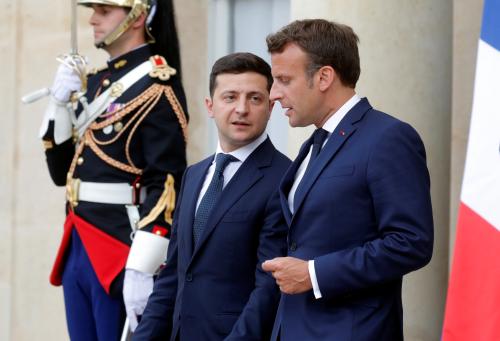
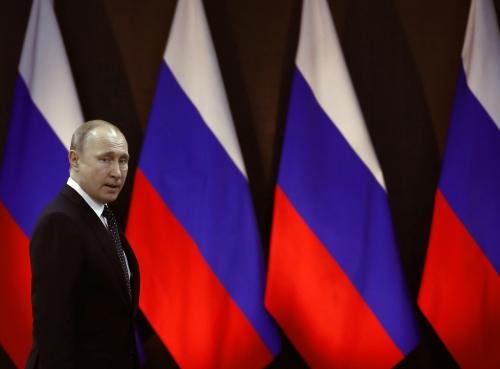
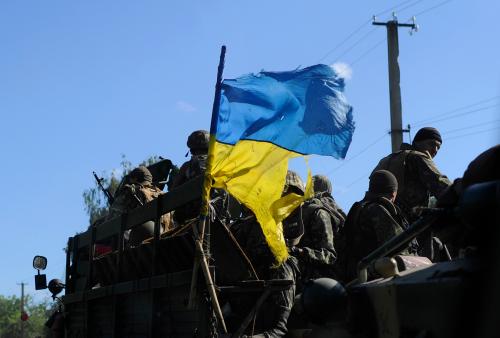
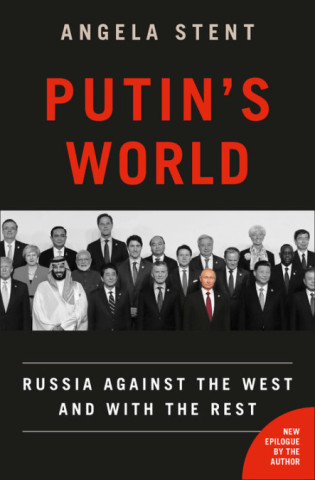



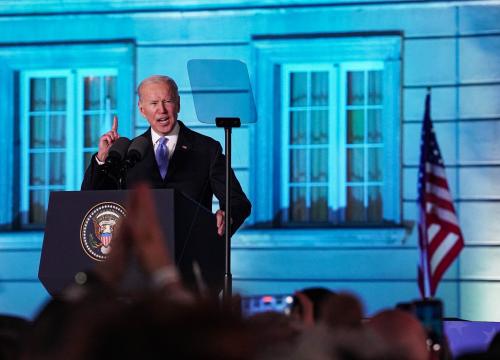
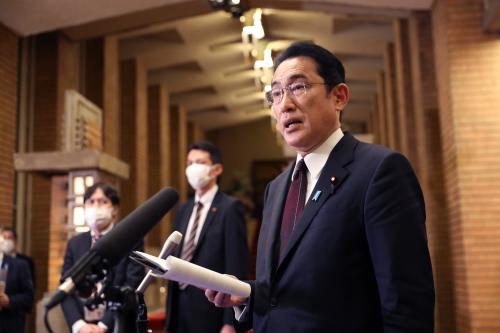

Commentary
TestimonyFive years after the Revolution of Dignity: Ukraine’s progress and Russia’s malign activities
June 18, 2019